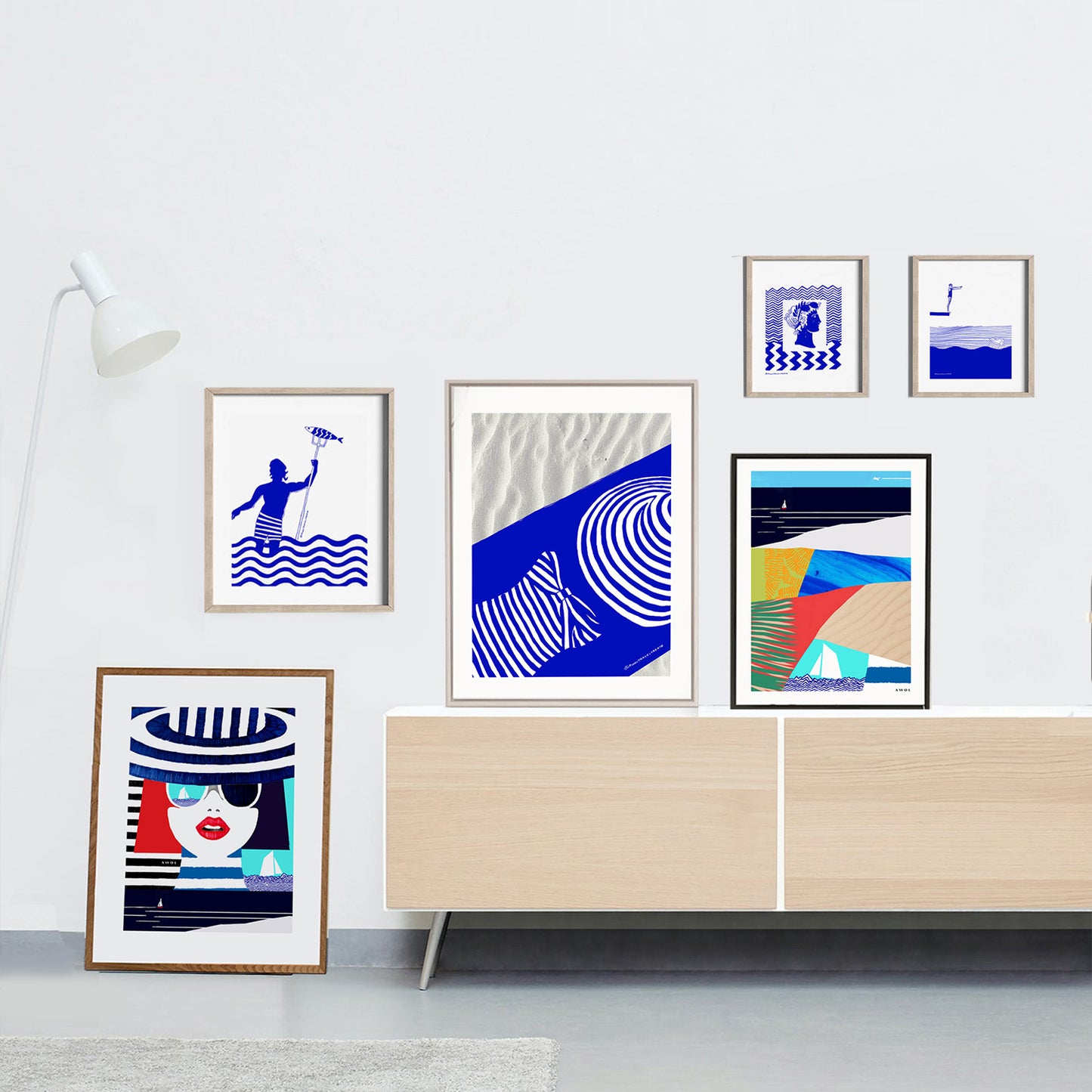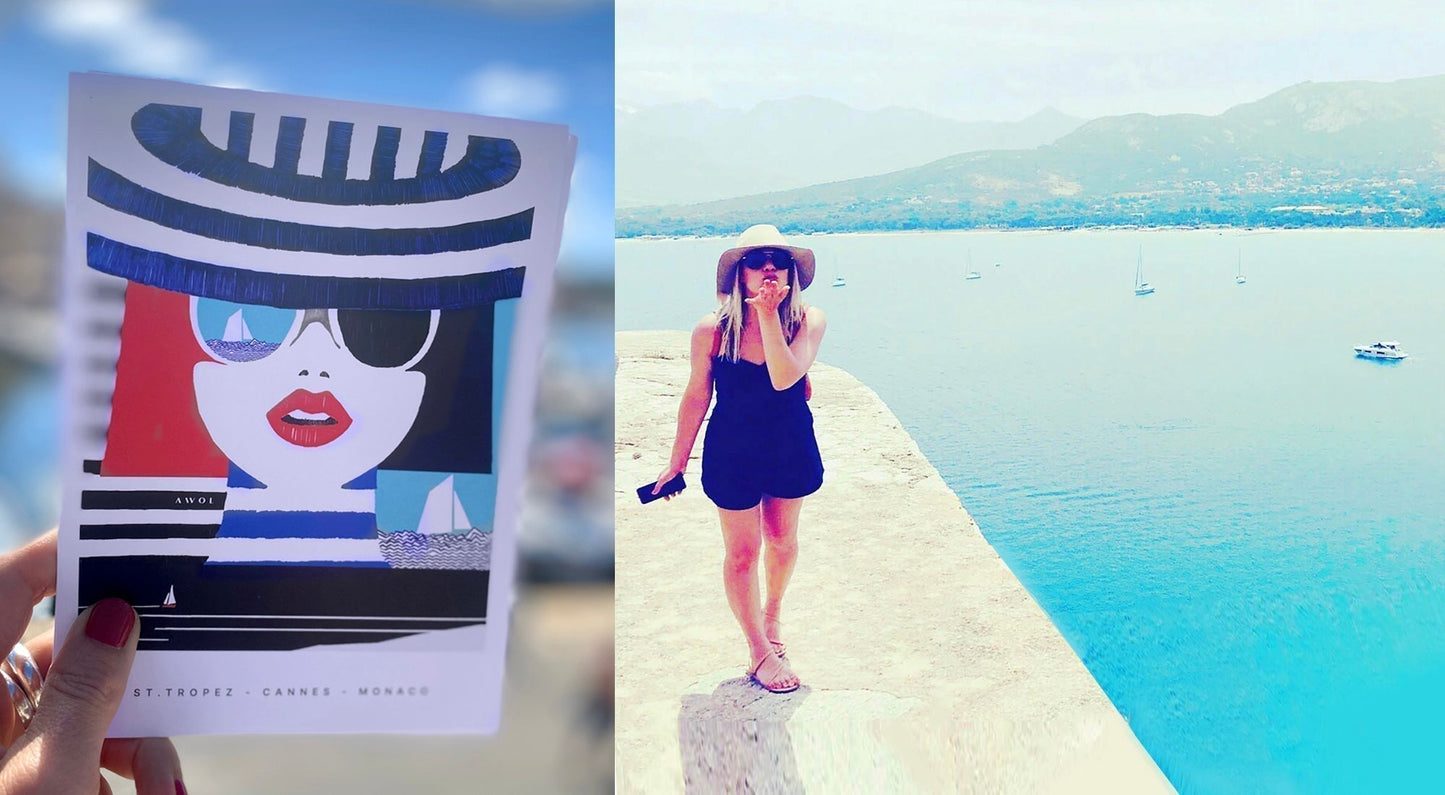I've written about my life-long love affair with art created in the South of France, and its subsequent influence on modern art. I've also written about how artists contributed to the famous reputation and myth of the Côte d'Azur as one of the world's most beautiful travel destinations. And how the colours, contrasts and breathtaking landscapes of the French Riviera influenced, and continued to influence contemporary art and artists - myself included.

What follows are my absolute top favourite art trips across the South of France, from the Eastern border with Spain to its Western frontier with Italy. I inhaled the sweet, breathtaking scenery that inspired iconic artworks, and walked around the art studios, living and creative spaces where some of the most famous (and some less famous) modern paintings were created by some of the most brilliant artists in the history of art. What follows are the ones that left the most profound imprints on my mind, eyes and creative heart.
My Top 5 Art & Travel Destinations In The South of France: Languedoc, Provence and The French Riviera
1. Collioure: Colours & Fauvism
Collioure is a Catalan port town in the South of France, on its Western frontier before crossing over into Spain. Our road trip here was filled with wine, vineyards, and the blue sea following us on the path peppered with flowers and postcard perfect vistas. It's been home to the anchovy industry since the Middle Ages, and it's been nicknamed the "City of Painters", birthplace of Fauvism (see my earlier texts on this), and colourful inspirations for artists like Matisse, Derain, Picasso, Dufy, and Chagall. In my heart, this town will forever be remembered as the colourful anchovy place with yummy wine and wild views.

If you like colourful art, you might like my Colourful Art Collection
2. Provence: Arles & Saint-Rémy, Through Van Gogh's Gaze
My relationship with VanGogh started at a very early stage, with an infatuation with his graphic yet organic black and white drawings, and which progressed quickly into an obsession with his mastery of expressive brushstrokes and colour - you guessed it, in my grandparent's art studios.
When we moved to Canada, on my 8th birthday my parents gifted me a gigantic book of all his work, and this is where I discovered the greyness of Holland, and the mesmerizing (and contrasting) yellows, blues, violets and vivid greens of Provence, from his paintings in Saint Remy and Arles. By this time, all I really wanted to play with was a plastic "Skippit" that all my Canadian suburbia friends had, but I didn't get it, and so I read the Van Gogh book front to back, for lack of more peer-acceptable toys.
My young mind couldn't coincide his happy colour palette with the part of his story where he suffered a mental breakdown: famously cutting off part of his own ear during a psychotic episode, hospitalized, discharged, and suffering two more attacks before entering a psychiatric institution in Saint-Rémy de Provence on May 8, 1889.
The paintings I had loved the most for their expressiveness, inherent energy and glorious colours (Yellow House, Starry Sky, Irises) were all created by him during the most torturous inner turmoil of his life.
The question is as old as time. How could someone so tortured create art of such beauty and originality? Did his pain come from the same place of artistic genius, or does this level of creativity tap into something that regular human emotions cannot process? ... And through their art, are they attempting to process the feelings that come with this connection to something bigger than most of us mortals cannot possibly comprehend through logic and reason?

If you're drawn to Van Gogh's floral artworks, check out my minimalist botanical art collection - inspired by Mediterranean gardens, but with a modern twist.
3. Aix en Provence: Cezanne's Studio & Mont Saint Victoire
I started my art lessons at 6 years old, the old fashioned way: drawing still lives in my grandfather's art studio, and learning the academic steps involved in formal art education in Europe. Each still life consisted of a full day of LOOKING at artfully arranged objects: fruits, dishes, clay feet, and some kind of draping. My grandfather taught me to look at the imaginary interplay of angles, proportions and lines crossing each composition.
After learning structure and draughtsmanship, the colours and volumes followed. An artist has to look, learn, and re-create, realistically, the scenes in front of them. I would sit for hours trying to depict reality as it appeared, like a realistic photograph until I got it "right". When I was released from the 8 hour sit, I usually grabbed a fresh sheet of paper, and in 5 minutes, re-do the still life my way. This usually involved pastels, charcoal, black paint and anything I could get my hands on that let the colour dry FAST. At this point of the day, I had absorbed the scene before me for hours, so I just let my hand be led by instinct and allowed thought and analysis to begone. These were my favourite artworks.

One of my mixed-media paintings I painted at 7 years old, using watercolour, marker and pastel, after I had finished the "proper" 6 hour art lesson where I had to learn to realistically depict the same still life using oil painting techniques. I prefer the energy of this one, done impulsively and in about 15 minutes, after the art lesson was finished.
And this is why I was so attracted to Cezanne's work, which seemed so immediate, graphic and spontaneous. I later learned that it took him a lifetime of endless looking, testing, doing and redoing to reach this level of artistry, even if it looked impulsive and spontaneous. He was a perfectionist who would fly into rages and destroy his own work, over and over. His difficult personality is hard to coincide with his almost spiritual depictions of the colours, nature and beauty of Provence.
His presence is palpable through his painting studio, now open to the public. The fruit bowls, skulls, ladders and objects from the still-lifes of my childhood were suddenly laid out in front of me, the light pouring in from the wall-to-wall windows he had installed in the space. Walking through the gardens surrounding his studio is in itself an immersion into the colours and textures of Provence.

My Landscape Art Collection features graphic lines and vivid colours, which I attribute to my early life love for Cezanne's strong lines and contrasts.
4. Antibes: Picasso's Lighter Artworks
I discovered Antibes through a mix of boats and art. Starving for escapism during Covid, Jeremy and I became obsessed with a show about yachting life in the Mediterranean, which allowed us to travel at a time we couldn't. Most of the super-yachts docked in this charming town called Antibes that I had never heard of, on the French Riviera.
Fast forward to 2020. Still Covid, but we were riding it out in France by now. The museums were freshly re-opened and much to my delight, I discovered that there was a museum filled with Picasso's work here. Not only that, but he actually lived and created much of the work in the castle that now houses the museum, before it was a museum.
And so, through a mix of yachts and art, we ended up in Antibes, and fell in love with both the city and the Côte d'Azur. The colours, the art, the old town, the markets, the beaches, the gardens, the beauty ... all of it. First, it's probably the most impressively located museum I've ever been to. A castle perched on the rampart walls of Antibes, offering sweeping views over the port, Salis Bay, the Cap d’Antibes, and the open sea. Outside, there is a sculpture garden filled with elongated Giacometti sculptures, suspended over the blindingly beautiful blue sea in the background. The sculptures actually change every few months, but the effect is always the same. Jaw drop.


If you're feeling drawn to the seaside, you may like the Beach Art Collection.
5. Nice: An Explosion Of Blues, Colours and the Modern Art of Matisse, Yves Klein and Raoul Dufy
I discovered Nice by accident, and I owe it to art. After being seduced by Antibes, I wanted more. And I was surprised to learn that there was a Matisse museum not far from it, in Nice - which I had been under the mistaken impression was a town for old people.

And so, I ended up calling Nice home... for now. I came for the art, and stayed for the colours: a vibrant dance of light and beauty that inspires me, endlessly, each second every day.

